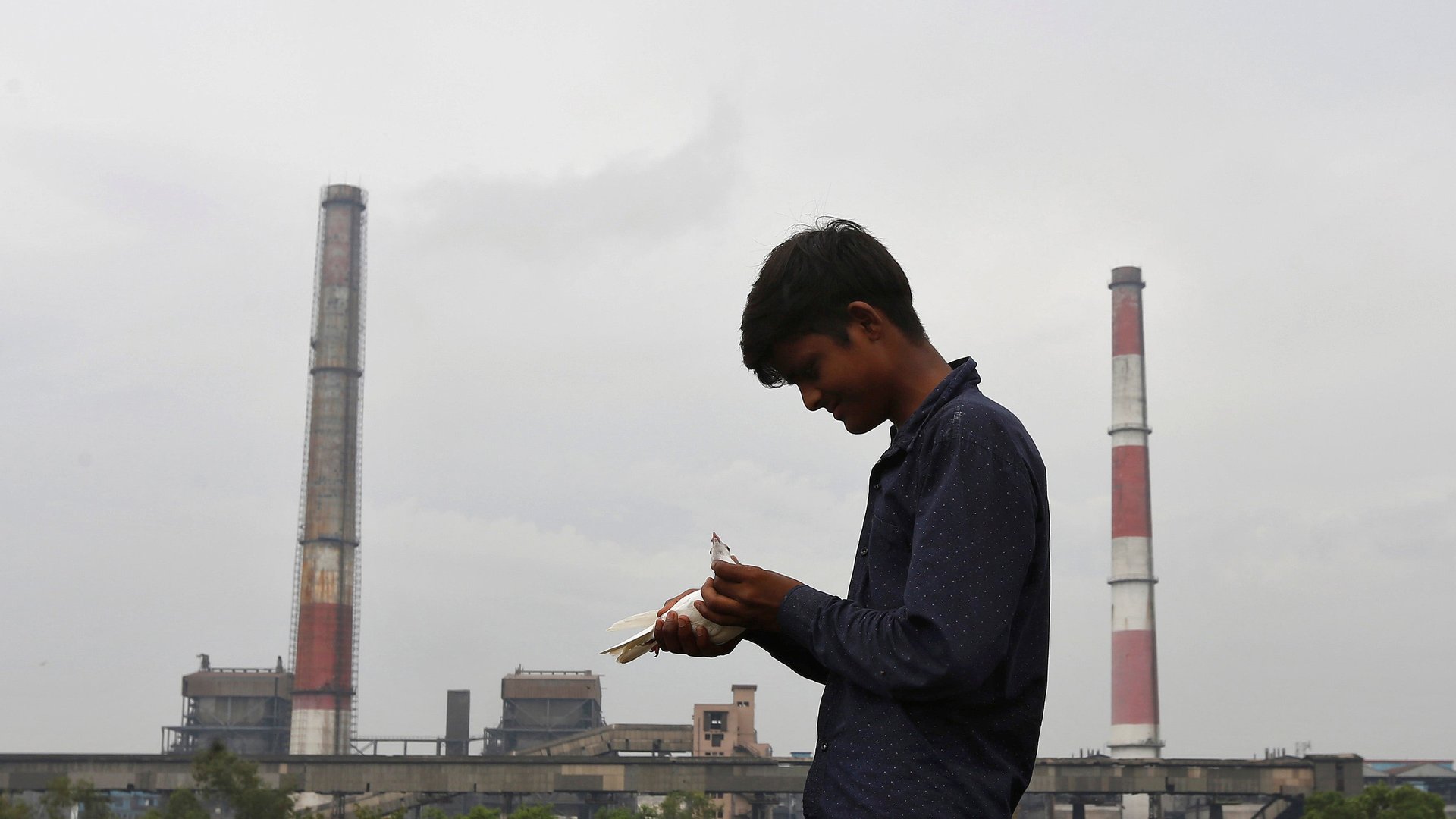Stop using India’s coal power plants as an excuse for climate inaction
If you’ve spent any time debating the challenge of climate change, you’ve likely come across a common excuse for inaction. It goes something like: “[Insert rich country name] might be able to cut emissions, but that won’t solve climate change, because India is still building dozens of coal power plants.”


If you’ve spent any time debating the challenge of climate change, you’ve likely come across a common excuse for inaction. It goes something like: “[Insert rich country name] might be able to cut emissions, but that won’t solve climate change, because India is still building dozens of coal power plants.”
Let’s put this excuse to bed, once and for all.
First, it’s a matter of equity. Historically rich countries have pumped a much larger proportion of greenhouse gases than poor countries. The Paris climate agreement clearly takes that fact into consideration: it allows poor countries, like India, to continue to increase their emissions for many years to come, but expects rich countries to start cutting emissions right away. Without the inclusion of such allowances, few poor countries would have signed the agreement. Done right, we’d still be able to keep global average temperatures below 2°C compared to pre-industrial times.
Second, it should not matter to other countries how India chooses to use up its remaining carbon budget. If India were to use natural gas, it could make that budget last longer. But India does not have much in terms of oil and gas reserves. It does have a lot of coal. And it’s choosing the most cost-effective way to provide energy to its citizens—many tens of millions of whom still lack access to electricity. (The cost of solar and wind power in India have fallen drastically. But without a cheap way to store the energy from variable renewables, they are not a like-for-like replacement for fossil fuels yet.)
Those reasons explain why, when measuring the climate change performance of the world’s top 60 emitters in terms of emissions, renewables deployment, energy use, and climate policies, and other indicators India is ranked 11, in the esteemed company of other green countries like Norway, Denmark, and the UK.
Additionally, the fact that India and other poor countries are building coal power plants does not mean coal has a longterm future. A recent analysis found that the coal power plants under construction across the world would add about 236 GW of power capacity in the next few years. But the retirement of coal power plants in the US, Europe, and India would mean losing 234 GW of power capacity.
Mining companies like BHP are looking to divest from thermal coal that’s burned in power plants. Insurance companies like Chubb are no longer supporting coal assets. Billionaires like Mike Bloomberg are spending vast sums to support the closure of coal power plants in rich countries. Development banks like EBRD and ADB, often used as a route for financing infrastructure projects in poor countries, are ending their support for coal. The dirtiest fossil fuel is finally on an irreversible decline.
There are many good reasons to get rid of coal: carbon emissions, particulate pollution, mining effluents, etc. The world should do all it can to cut its coal addiction. But let’s not forget that coal still provides more than 25% of global energy consumption in a world where nearly a billion people still don’t have access to basic necessities like electricity. It’s the dual challenge that the world doesn’t yet have a simple way to solve.
“We’re very concerned about the environment, but if you ask me to put it in the order of priorities, I would say having sufficient power for development comes first,” RK Singh, India’s power minister, said at a conference in February. Singh is well aware that India is one of the most vulnerable countries to climate change, but he also recognizes the importance of increasing energy access to uplift the country’s poor.
India is handling its climate commitments as it best can. That’s no excuse for any other country to not do its bit in this global fight.